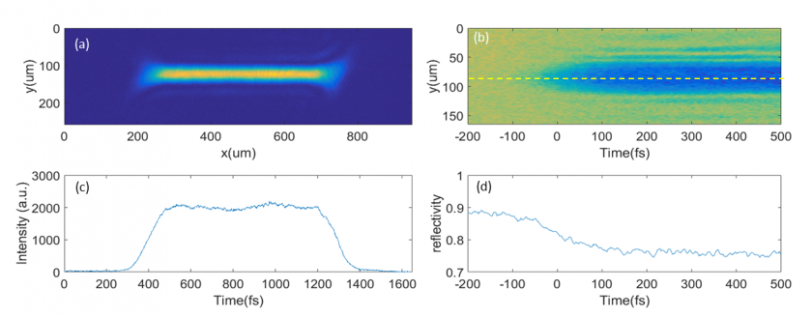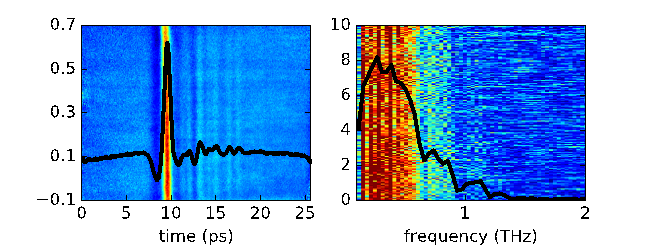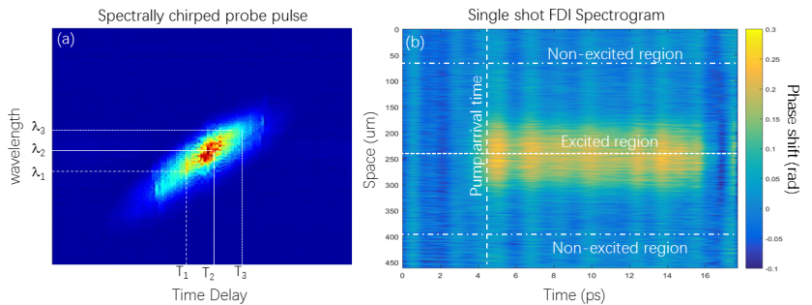Experimental Research and Development
We are developing new ultrafast diagnostics techniques with picosecond to femtosecond resolution using Ti:Sapphire based laser systems. Our laser delivers single pulse energies of 30 mJ at 45 fs and 120 Hz maximum repetition rate. This laser system allows us to excite free-standing thin film samples (such as gold, tungsten etc.) to Warm Dense Matter states with energy densities >1011 J/m3 (1 Mbar). A variety of new ultrafast diagnostics includes:
Single-shot Optical Properties Measurements
The temporal evolution of optical properties is an important pathway to understand the electron kinetics, electronic structure and electron-ion coupling of matter excited by ultrafast laser pulses. In our lab, we can either spatially chirp the excitation pulse and measure the optical properties (reflectivity and transmission of the probe pulse) of the sample in a single shot with a 1 ps time window and 50 fs resolution (Fig. 1), or spectrally chirp the probe pulse for ~10 ps time window and 1 ps resolution. Such methods are essential for precise measurements, mitigating the uncertainties from shot-to-shot fluctuation and temporal jittering.

Single-shot THz Conductivity
Electrical conductivity is one of the important properties of warm dense matter. The theoretical description is very challenging because it contains information on electron-electron, electron-ion interactions, and electronic and ionic structures. Most measurements of electrical conductivity are often taken at optical frequencies that rely on Drude theory. To improve these experiments, we are developing a more precise method to measure the electrical conductivity at THz frequency. Our method relies on echelon-based single shot terahertz (THz, 1 THz = 1012 Hz = 1 ps-1) detection. Standard, state-of-the-art THz detection techniques require many laser pulses in order to record the THz time-domain electric field waveform, ETHz(t). Our new capability provides ETHz(t) with a single laser pulse making it possible to determine the low-frequency conductivity of warm dense matter, cf. Figure 2.

Single-shot Frequency Domain Interferometry (FDI) Measurements
The stability of atomic lattice and ionic motion in solids excited by ultrafast laser pulses is important to understand the formation of warm dense matter. Frequency domain interferometry monitors the surface motion of the target with nanometer scale resolution due to the Doppler effect. Our chirp-pulse capability allows us to capture the onset of lattice disassembly and surface motion velocity in a single shot with sub-picosecond resolution, cf. Figure 3.

